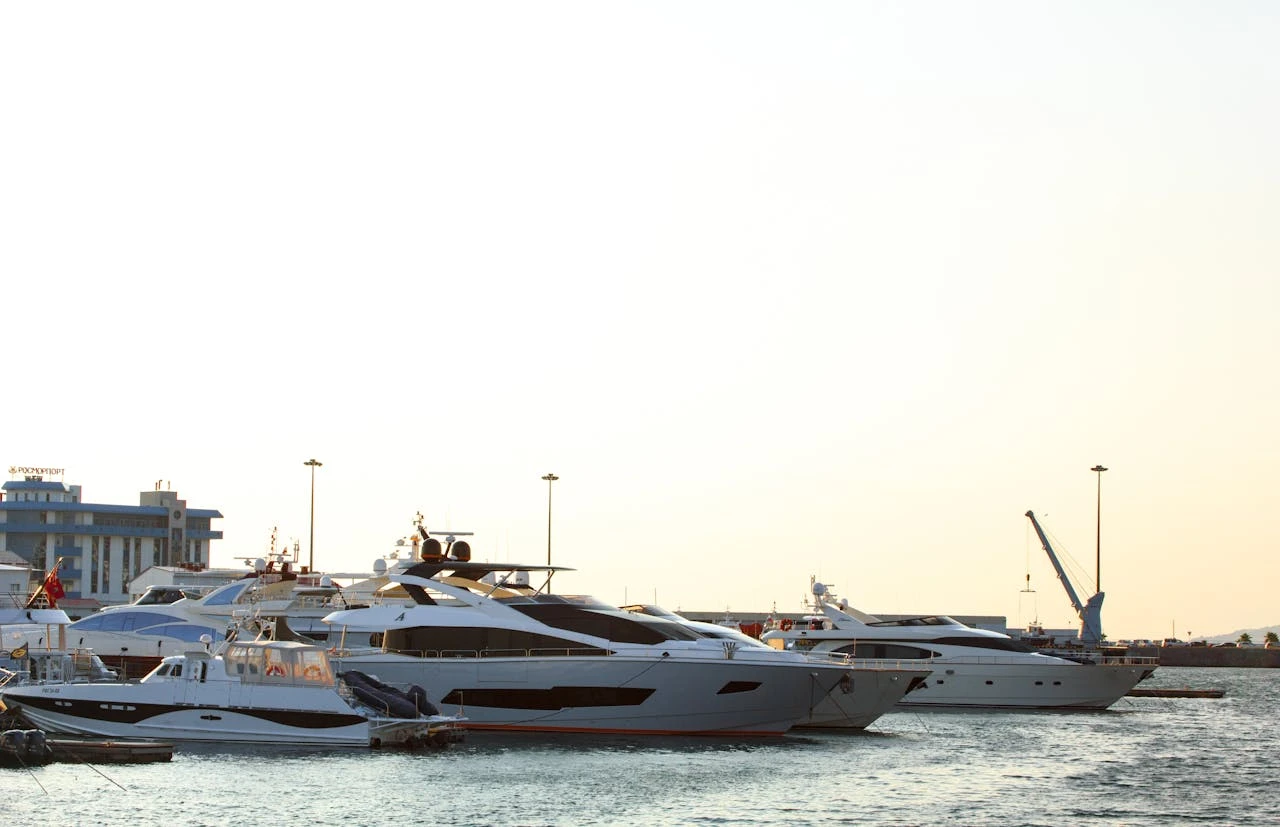10 February 2025
How Is the Yacht Powered? 3 Effective Methods
Yachts rely on a large amount of electrical energy to run their various systems, and the source of that power is usually the electrical systems on board, which are mainly on-board generators, battery systems, alternative energy sources and so on. In this post, we will look at how yachts are powered, and there are 3 main ways to do this.

Powering the yacht through the on-board generator
One of the common ways of powering a yacht is through a generator. There are two main types of generators commonly used on yachts, diesel generators and petrol generators. Here are the features of these two types of generators:
Diesel generators
Diesel generators are more fuel efficient and can produce large amounts of electricity, they work by burning diesel fuel to turn the generator, which generates electricity. Diesel generators on yachts are usually located in the cabin and are connected to the yacht's electrical system. There are many different sizes of diesel generators with different power outputs, and you can choose the right one according to your actual needs. Generally speaking, diesel generators have high power output, low noise and low emissions, but it requires high maintenance and regular maintenance to keep it in good running condition.
Petrol generator
The working principle of a petrol generator is almost the same as that of a diesel generator, the difference being that petrol generators use petrol instead of diesel. In terms of size and power, petrol generators are smaller, less powerful and more affordable than diesel generators. A significant advantage of a petrol generator is that it has a simpler start-up process and lower maintenance requirements compared to a diesel generator, which also means a lot of time and cost savings during use. However, petrol generators are less efficient than diesel generators and produce more vibration and noise during use, potentially affecting one's sailing experience.
Power supply through battery system
Power supply through battery system is also one of the common ways of powering a yacht. The main types of batteries are lead-acid and lithium-ion batteries. Lead-acid batteries have been the traditional choice for yachts; they are cheap, reliable, relatively inexpensive and can last for years with proper maintenance. However, lead-acid batteries are heavier and bulkier and have a lower energy density, a shorter cycle life and a higher cost to maintain them.
Lithium-ion batteries are a more desirable option for powering yachts. Its high energy density, light weight and long service life make it a very popular choice on yachts. Because of its high energy density, it can store more energy in less space. In addition to this, lithium-ion batteries are also more efficient in discharging, so you can get more energy out of them. However, it is more expensive compared to lead-acid batteries, which can be a disadvantage for some yacht owners.
When it comes to the environment, lithium-ion batteries are more environmentally friendly than lead-acid batteries, which contain toxic substances that are not contained in lithium-ion batteries, making them friendlier to the environment. Although lithium-ion batteries are more environmentally friendly, they do require careful monitoring and management so that potential problems such as overheating can be prevented.
Generating power through alternative energy sources for yachts
Whilst traditional generators are very important for powering yachts, alternative sources of energy for yachts are also a way of powering yachts that should not be overlooked. There are 3 main ways of generating power from alternative energy sources:
Solar panels
Solar panels can be installed in many places on a yacht and they have the advantages of no fuel costs, low maintenance, no noise, cleanliness and ease of installation. Whilst there are many advantages, there are some disadvantages such as having a limited power output, dependence on sunlight, susceptibility to shading, and high initial investment costs.
Wind Turbines
Typically mounted on the deck or mast, wind turbines are capable of generating electricity from the wind and are suitable for use when yachts are sailing in windy areas. The advantage of wind turbines is that they generate electricity without polluting the environment, even when the yacht is not in use. However, wind turbines are more dependent on wind power and are susceptible to wind direction.
Hydroelectric Generators
Hydroelectric generators rely on the current of the water in which the yacht is travelling to generate electricity. These generators are usually mounted on the stern of the yacht and can produce a large amount of electricity to power the lighting, appliances and electronic equipment on board. Hydro generators are very quiet in operation, producing no noise and have no complex moving parts, so they require little routine maintenance, greatly reducing the cost and time of use.
 Report
ReportNetizen comment
Comments

Leave the comment
Relevant Recommendation
Yacht Guide
Most Recommended




